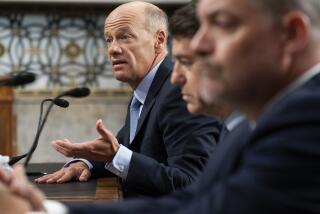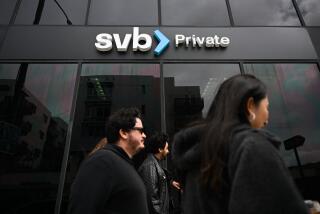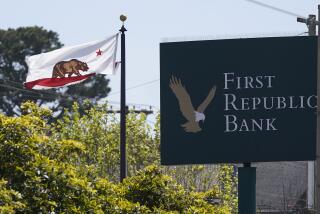S&Ls; Need a Better Breed of Watchdogs
- Share via
Amid all the publicity about the need for more federal insurance to bail out ailing savings and loans, there has been far too little discussion about how to avoid needing it.
It must be obvious by now that the problems of this industry aren’t just the result of factors outside its control--gyrating interest rates and chaos created by deregulation of the financial industry generally. The problems stem as much as anything from poor and reckless management and inadequate regulatory supervision.
The real problem has been that too many S&Ls; have been permitted to engage in practices that were incredibly unwise, and worse.
Bent on achieving instant growth, many took all-out gambles on the direction of interest rates, paid premium prices for deposits and handed out loans like free samples on the street. Some went beyond that. Loans went to chums of top officers and directors, a nice form of charity with other people’s money.
It was growth for growth’s sake at its worst. The purpose too often was not to benefit shareholders but to provide top management with an excuse for collecting outlandish salaries.
The result has been nothing short of awful. The once-respected Federal Savings and Loan Insurance Corp., which insures individual deposits up to $100,000, has been severely weakened. The backlog of troubled S&Ls; to be dealt with remains large. The impact of this overhang is a continuing pattern of regulatory solutions that only paper over the problem and prolong its effects.
The Federal Home Loan Bank Board, supposed regulator of this industry, has been forced by the severity of the problem to permit a number of stop-gap solutions.
Stronger institutions have been permitted to swallow weaker ones, even though this has converted the industry from one in which each S&L; operated close to its home base to one with continental giants. Management of some of these new giants may be able to handle this new complexity. Others may not be.
The bank board also has permitted S&Ls; to engage in strange bookkeeping, effectively turning losses into profits on their books and putting off the day when the losses must be recognized.
Finally, the board has permitted some of these troubled S&Ls; to come under the management wing of other S&Ls; without merging.
In all these instances, there is a price--and a steep one. The federal insurance agency absorbs some of the bad-loan losses. The S&Ls; are permitted to keep operating and also are permitted to pay above-market interest rates to attract and hang onto depositors. That creates competitive pressure for higher rates throughout the industry--nice for savers, maybe, but bad for an ailing industry’s prospects for recovery.
Several things are now clear. Raising the level of the insurance fund will only raise the ransom being paid to keep S&Ls; from collapsing. What needs to be raised along with the insurance fund is the level of regulatory oversight.
The watchdogs in place up until now at both the state and federal levels have been far too chummy with the leaders of the industry they are supposed to be watching. The heads of these agencies have been appointed more to repay political debts than to provide regulatory expertise. New S&Ls; have been permitted to start up with too little scrutiny of new owners and their motives.
A first step in improving regulation should be to give the Federal Home Loan Bank Board more independence and to give it more of the resources and clout enjoyed by the Federal Reserve System and the Comptroller of the Currency, which regulate banks. Bank regulation hasn’t been all that impressive, but it has been better than S&L; regulation.
Meanwhile, more S&Ls; must be permitted to fail rather than operate with a variety of crutches. This will require more insurance funding, but as long as the institutions are bailed out, none of the depositors will face losses.
Only by imposing the threat of loss on the big depositors can the government restore an element of rationality, making it tougher for poorly managed outfits to attract funds and making it incumbent on major depositors to more carefully choose where to put their money.
Business doesn’t much like regulation. The S&L; industry, however, deserves a lot more of it.
More to Read
Inside the business of entertainment
The Wide Shot brings you news, analysis and insights on everything from streaming wars to production — and what it all means for the future.
You may occasionally receive promotional content from the Los Angeles Times.










